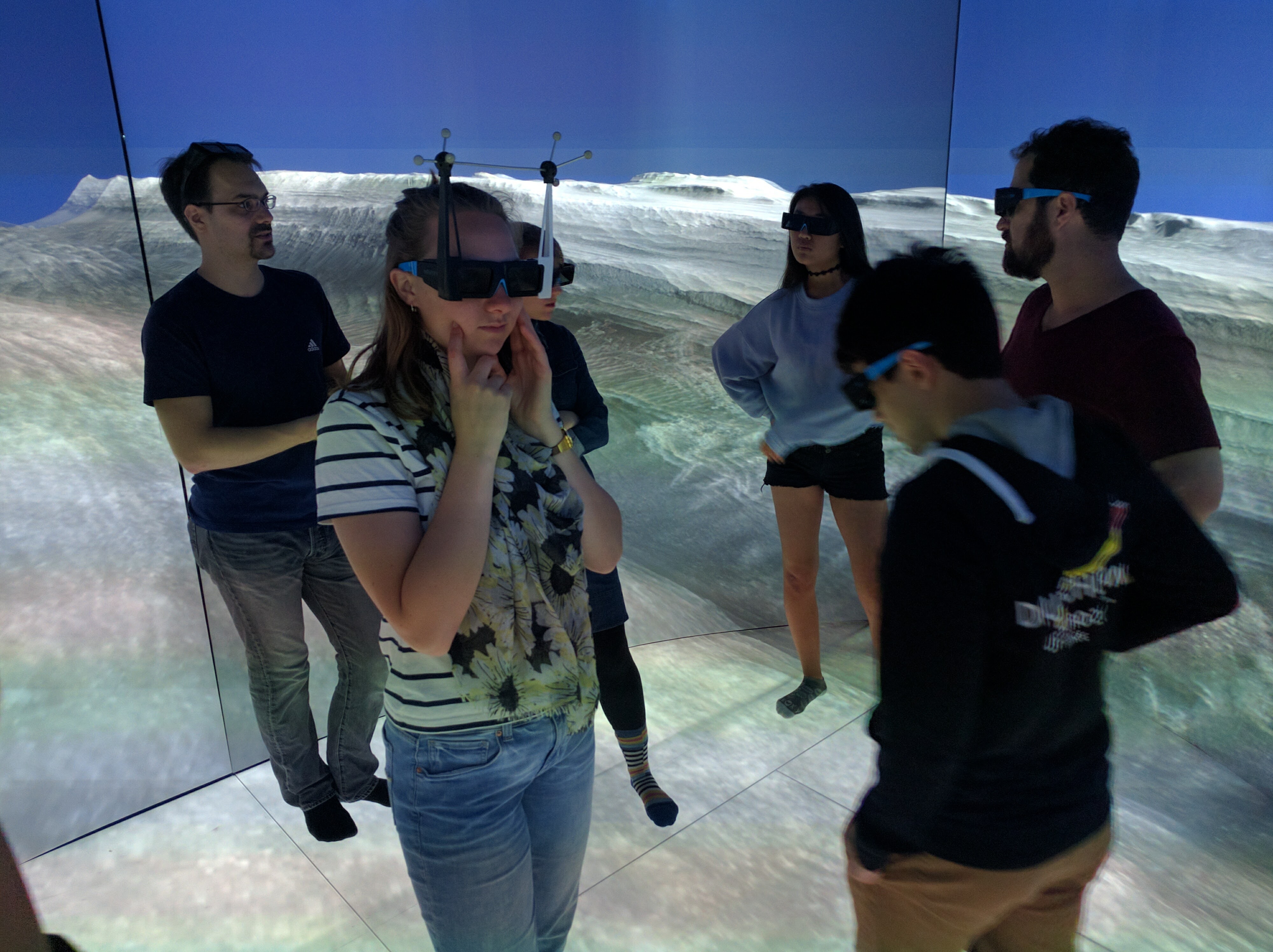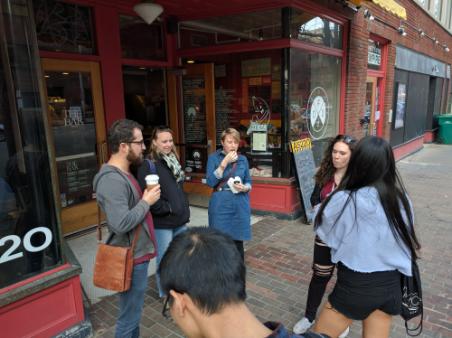
This past fall I was accepted to the Ammerman Center for Arts and Technology as a student scholar. The Center is one of the five academic centers on campus, which provide resources to students and faculty doing interdisciplinary work on a specific subject. This is the fifth in a regular series of posts I’ll be writing during spring semester about finding my path as a new member of the Center.
In their first semester at the Center, students take a special gateway course called History of Arts and Technology. This will help me with my goal as a Center scholar to create connections between my major (philosophy), the arts, and technology. The course is taught by professors in a variety of departments, currently Art Professor Nadav Assor is teaching the course.
Recently, I traveled with some of my Ammerman Center Gateway course classmates to Providence, Rhode Island, for an afternoon of viewing several different exhibitions and art spaces related to our class. Our first stop was at the RISD (Rhode Island School of Design) Museum to view the Digital Museum of Digital Art (DiMoDA). We took turns donning virtual reality (VR) headsets and using game controllers to explore the museum’s computer generated interior as well as the various pieces of virtual art on display. The experience was completely immersive; in fact, perceiving myself moving through the museum’s interior while I was really sitting motionless in a gallery in the RISD made me very dizzy. This led us to discuss how virtual reality currently lacks commercial uses because many people suffer the same kind of motion sickness that I experienced. If you’re interested in experiencing DiMoDA it’s available for download to any computer at dimoda.art, but it’s a much more intense experience with a VR headset.
After visiting DiMoDA, we walked up College Hill to view Pierre Huyghe’s “Untitled (Human Mask),” which was on display at a Brown University gallery. It’s a film that depicts a monkey wearing a human mask wandering around an abandoned house in a region affected by the Fukushima nuclear disaster. The gallery was very dark, and the film was played on a screen in the center of the room that faced the opposite direction from the door, so we had to walk to the back to view it. This created a very immersive experience that made me feel as if I were at the disaster site in Japan.
Next we viewed Brown’s YURT, another type of VR experience, but instead of wearing a headset, sixty-nine projectors display images onto screens that completely surround you. I didn’t get as sick in this VR system since the displays were much more stationary than at DiMoDA, and I could walk around a little in the space. Some of the displays included a walk on the surface of Mars, an architectural rendering of a living room and 3-D poetry, where the reader is surrounded by projections of various phrases and/or letters. The YURT was very inspiring and reminded me that at Conn, we can create versions of all of these displays on our 2-D visualization walls.
We then took a tour of AS220, an artist-run organization that owns and operates galleries, performance and educational spaces and a restaurant in downtown Providence. The organization seeks to provide spaces for any artist in Rhode Island to create, display and perform work. It was great to see that there are excellent resources and spaces available to people interested in seriously pursuing their artistic interests outside of a college setting. People even come from Boston to take advantage of AS220’s resources.
Finally, we ate a pizza dinner with Professor Assor and his wife. Then we went to the train station from where we took Amtrak back to Union Station in New London, only an hour away. I always enjoy taking the train places, especially when it doesn’t take too much time out of my day. For me the train was a great way to end a packed and enlightening afternoon.
Pictured below: A couple of us in front of AS220’s restaurant.
